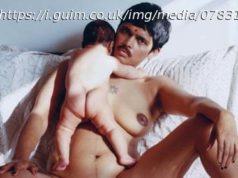A topper caption, which is a very nice feature
« The category is: live … work … pose! »
Emmy winner Billy Porter’s boisterous bravado soars through television screen …
A topper caption, which is a very nice feature « The category is: live… work… pose! » Emmy winner Billy Porter’s boisterous bravado soars through television screens and burrows itself in viewers’ ears in the introduction to each episode of FX’s » Pose. » But they’ll only get to hear it one more time: The series finale airs Sunday (10 EDT/PDT) after three groundbreaking seasons. « Pose » will undoubtedly leave a hole when it comes to transgender representation on TV; it’s the only show with a cast made up mostly of trans actors and characters, including stars Mj Rodriguez, Indya Moore and Dominique Jackson. But transgender representation on TV is slowly but significantly improving. Trans actors and characters will appear across networks and streaming services, with more waiting in the increasingly inclusive wings. Even after « Pose, » 21 transgender characters remain on TV, according to GLAAD’s director of transgender representation Nick Adams, including Josie Totah’s comedic turn on Peacock’s « Saved by the Bell » reboot and Brian Michael Smith on Fox’s « 911: Lone Star. » Experts are bullish about the future of transgender representation, thanks to the example set by « Pose. » « It’s beyond optimism, » says actress Jen Richards, who appeared in Netflix’s 2020 transgender history documentary » Disclosure, » and most recently on CBS’ « Clarice. » « I have certainty that (transgender representation is) going to continue to improve. » Yes, Billy, yes: Why Billy Porter doesn’t care what you think if he wears a dress on the red carpet « Pose » explored the world of New York ballroom culture in the 1980s and 1990s and the power of chosen family. Ballroom involves groups of LGBTQ people gathered in « houses, » competing in confident and charismatic modeling and dancing. Whether characters are pulling off a gorgeous, jaw-dropping look, or pulling together in times of tragedy, the community of queer and transgender men and women of color lift each other up each week. When they fight, they fight like family – meaning no fight lasts forever. « ‘Pose » has been the undeniable catalyst for public conversations about the intersections of race, gender and class in the U.
Home
United States
USA — Art ‘Pose’ is ending. What’s the future for transgender representation on TV?






